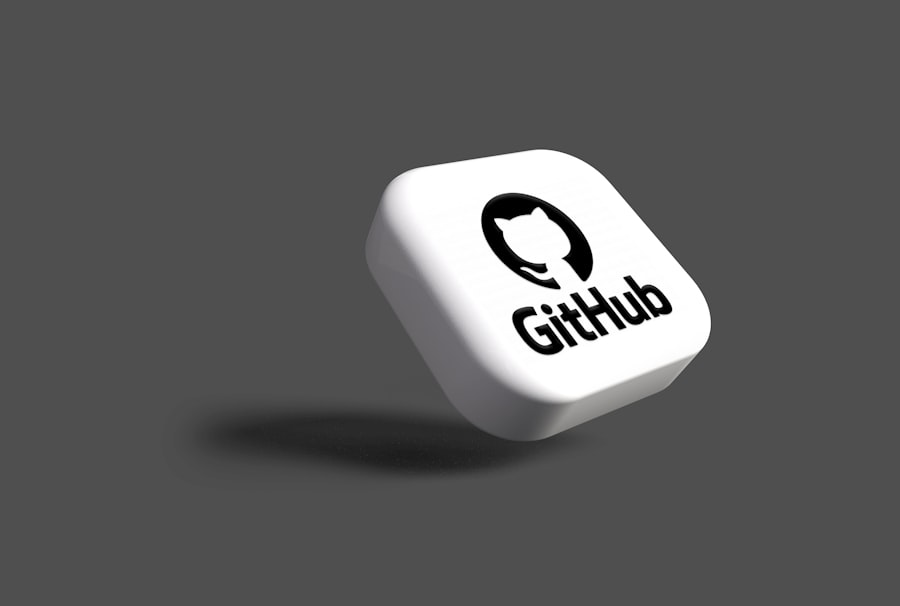As I delve into the world of WordPress development, one of the most exciting features I encounter is Gutenberg custom blocks. Introduced in WordPress 5.0, Gutenberg revolutionized the way content is created and managed on the platform. It shifted from a traditional editor to a block-based approach, allowing users to build complex layouts with ease.
Custom blocks take this a step further, enabling developers like me to create tailored content elements that meet specific needs. This flexibility not only enhances user experience but also empowers developers to extend WordPress’s capabilities. The beauty of Gutenberg custom blocks lies in their versatility.
Each block can be designed to serve a unique purpose, whether it’s a simple text block, an image gallery, or a complex layout that integrates various media types. By understanding how these blocks function, I can create reusable components that streamline the content creation process for users. This modular approach not only simplifies the editing experience but also encourages creativity, as I can design blocks that align perfectly with the branding and functionality of a website.
Key Takeaways
- Gutenberg Custom Blocks are a powerful feature of WordPress that allow developers to create custom content blocks for the Gutenberg editor.
- Setting up a development environment is essential for creating and testing custom blocks, and tools like Node.js and npm are commonly used for this purpose.
- Creating your first custom block involves writing JavaScript and PHP code, as well as using the Gutenberg Block API to register and define the block.
- Block attributes and options can be added to customize the behavior and appearance of custom blocks, providing users with more control over the content.
- Adding custom styles and CSS to custom blocks allows for further customization and enhances the visual appeal of the blocks within the editor.
Setting Up Your Development Environment
Before I can start creating custom blocks, I need to set up my development environment properly. This involves installing the necessary tools and configuring my local WordPress installation. I typically begin by ensuring that I have the latest version of WordPress installed on my local server.
Using tools like Local by Flywheel or XAMPP makes this process straightforward, allowing me to create a sandbox environment where I can experiment without affecting a live site. Once my WordPress installation is up and running, I proceed to install the Gutenberg plugin if it’s not already included in my version of WordPress. This plugin provides the latest features and updates related to the block editor, ensuring that I have access to all the tools I need for development.
Additionally, I set up a code editor like Visual Studio Code or Sublime Text, which offers syntax highlighting and other features that enhance my coding experience. With everything in place, I feel ready to dive into the exciting world of custom block development.
Creating Your First Custom Block

With my development environment set up, I’m eager to create my first custom block. The process begins by registering the block using JavaScript and PHP. I typically start by creating a new plugin folder within the `wp-content/plugins` directory and adding a main PHP file that will handle the block registration.
In this file, I use the `register_block_type` function to define my block’s properties, including its name, title, and render callback. Next, I write the JavaScript code that will define how my block behaves in the editor. Using React, which is the underlying framework for Gutenberg, I create a simple block that allows users to input text and display it on the front end.
This initial block serves as a foundation for more complex functionalities that I plan to implement later. As I test my block in the editor, I feel a sense of accomplishment seeing my code come to life and being able to interact with it directly.
Exploring Block Attributes and Options
As I continue my journey into custom block development, I realize that understanding block attributes and options is crucial for creating dynamic and flexible blocks. Attributes are essentially the data points that define how a block behaves and appears. For instance, if I’m building a custom button block, I might want to include attributes for the button text, URL, and color.
By defining these attributes in my block registration, I can easily manage user input and ensure that the block is customizable. In addition to attributes, I explore various options that enhance user experience when interacting with my blocks. This includes adding controls in the block inspector panel that allow users to modify attributes directly from the editor.
By utilizing components from the Gutenberg component library, such as color pickers or dropdowns, I can create an intuitive interface that makes it easy for users to customize their content without needing any coding knowledge. This focus on usability not only improves the overall experience but also encourages users to engage more deeply with their content.
Adding Custom Styles and CSS
Once I’ve established the core functionality of my custom block, it’s time to focus on aesthetics by adding custom styles and CSS. A visually appealing block can significantly enhance user engagement and overall site aesthetics. To achieve this, I typically create a separate CSS file within my plugin folder and enqueue it in my main PHP file using `wp_enqueue_style`.
This ensures that my styles are loaded correctly in both the editor and on the front end. In crafting my styles, I pay close attention to responsiveness and accessibility. It’s essential that my blocks look great on all devices, so I often use media queries to adjust styles based on screen size.
Additionally, I consider accessibility best practices by ensuring sufficient color contrast and providing alternative text for images. By prioritizing these aspects, I can create blocks that not only look good but are also functional for all users.
Implementing Advanced Block Functionality

As I gain confidence in creating basic custom blocks, I become eager to implement more advanced functionality. This often involves integrating external APIs or adding dynamic features that enhance interactivity. For example, if I’m developing a custom testimonial block, I might want to pull in testimonials from an external database or allow users to submit their testimonials directly through the block interface.
To achieve this level of functionality, I often rely on WordPress’s REST API. By making asynchronous requests from my JavaScript code, I can fetch data dynamically without requiring a full page reload. This not only improves performance but also creates a smoother user experience.
As I experiment with these advanced features, I find myself excited about the endless possibilities for creating engaging content blocks that truly resonate with users.
Testing and Debugging Your Custom Blocks
With my custom blocks developed and enhanced with advanced functionality, it’s crucial to test and debug them thoroughly before deployment. Testing ensures that everything works as intended across different browsers and devices. I typically start by checking for any JavaScript errors in the console while using my blocks in the editor.
Tools like Chrome DevTools are invaluable during this process as they allow me to inspect elements and troubleshoot issues effectively. Additionally, I conduct user testing by asking colleagues or friends to interact with my blocks and provide feedback on usability and functionality. This external perspective often uncovers issues or areas for improvement that I might have overlooked.
By iterating based on this feedback and conducting thorough testing, I can ensure that my custom blocks are robust and ready for deployment.
Deploying and Publishing Your Custom Blocks
After extensive testing and refinement of my custom blocks, I’m finally ready to deploy them for public use. The deployment process typically involves packaging my plugin files into a zip file for easy distribution. Before publishing it on the WordPress Plugin Repository or any other platform, I ensure that all documentation is complete and clear so that users can easily understand how to install and use my blocks.
Once published, I continue to monitor user feedback and support requests actively. Engaging with users helps me identify any potential issues or areas for enhancement in future updates. Additionally, staying updated with WordPress developments ensures that my custom blocks remain compatible with new versions of the platform.
The journey from understanding Gutenberg custom blocks to deploying them has been incredibly rewarding, and I’m excited about continuing to innovate in this space as WordPress evolves.
If you’re diving into “The Ultimate Guide to Gutenberg Custom Block Development,” you might also find it beneficial to explore additional resources that can enhance your understanding of WordPress development. A related article that could provide further insights is available on The Sheryar’s Blog. This blog offers a wealth of information on web development, including tips and tutorials that complement the skills needed for creating custom Gutenberg blocks. By exploring these resources, you can deepen your knowledge and refine your development techniques.
FAQs
What is Gutenberg Custom Block Development?
Gutenberg Custom Block Development refers to the process of creating custom blocks for the Gutenberg editor in WordPress. These custom blocks allow users to add unique and specialized content to their websites, enhancing the overall user experience.
Why is Gutenberg Custom Block Development important?
Gutenberg Custom Block Development is important because it allows developers to create custom content blocks that are tailored to the specific needs of a website. This can include anything from custom layouts and designs to interactive elements and dynamic content.
What are the benefits of using custom blocks in Gutenberg?
Using custom blocks in Gutenberg allows for greater flexibility and creativity when designing and building websites. It also enables developers to create a more intuitive and user-friendly editing experience for content creators.
What are the key components of Gutenberg Custom Block Development?
The key components of Gutenberg Custom Block Development include creating block templates, registering custom blocks, defining block attributes, and implementing block functionality using JavaScript and React.
What skills are required for Gutenberg Custom Block Development?
Skills required for Gutenberg Custom Block Development include proficiency in JavaScript, React, and WordPress development. Familiarity with the Gutenberg editor and its block API is also essential.
Are there any resources available for learning Gutenberg Custom Block Development?
Yes, there are numerous resources available for learning Gutenberg Custom Block Development, including official WordPress documentation, tutorials, online courses, and community forums. These resources can help developers get started with creating custom blocks and mastering the intricacies of Gutenberg development.
